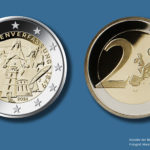
Currency in crisis – German emergency money 1914-1924, British Museum
- October 06, 2019
- by
- Pierre

Notgeld, or ‘emergency money’, from the early Weimar Republic, is a powerful illustration of the turbulent years during and after the First World War in Germany.
This exhibition reveals how this temporary currency responded to a national crisis with distinctive designs commenting on German society and politics. These range from the Turnip Notgeld lamenting the disastrous food shortage of 1917, to richly illustrated designs featuring regional landmarks and folk narratives, intended to buoy a population hungry for reassurance.

Notgeld with face value of 25 pfennig, issued in Brocken, Germany, 1922.
In its short lifespan, Notgeld’s purpose and design changed dramatically. It was introduced as a substitute currency during a coin shortage in First World War, with patriotic and sometimes subversive messages. Popular with German people, it became highly collectible and then, during the hyperinflation of 1923, regained its role as an alternative currency.
In the chaotic early years of the Weimar Republic (1919–1933), designs often depicted idealised views of German history and culture as well as exciting travel advertisements, appealing to a people longing to shake off the bitter war years.

ERFUHRT Notgelds – Monnaie de Paris Museum collection
Intrinsically bound to German identity and the upheaval that followed the First WorldWar, Notgeld is a fascinating microcosm of public feeling in post-war Germany.

HAMBURG Notgelds – Monnaie de Paris Museum collection
Exhibition details
Currency in crisis
German emergency money 1914-1924
3 October 2019 – 29 March 2020
Free entrance
Room 69a – British Museum
Sources: British Museum and NUMISMAG.















